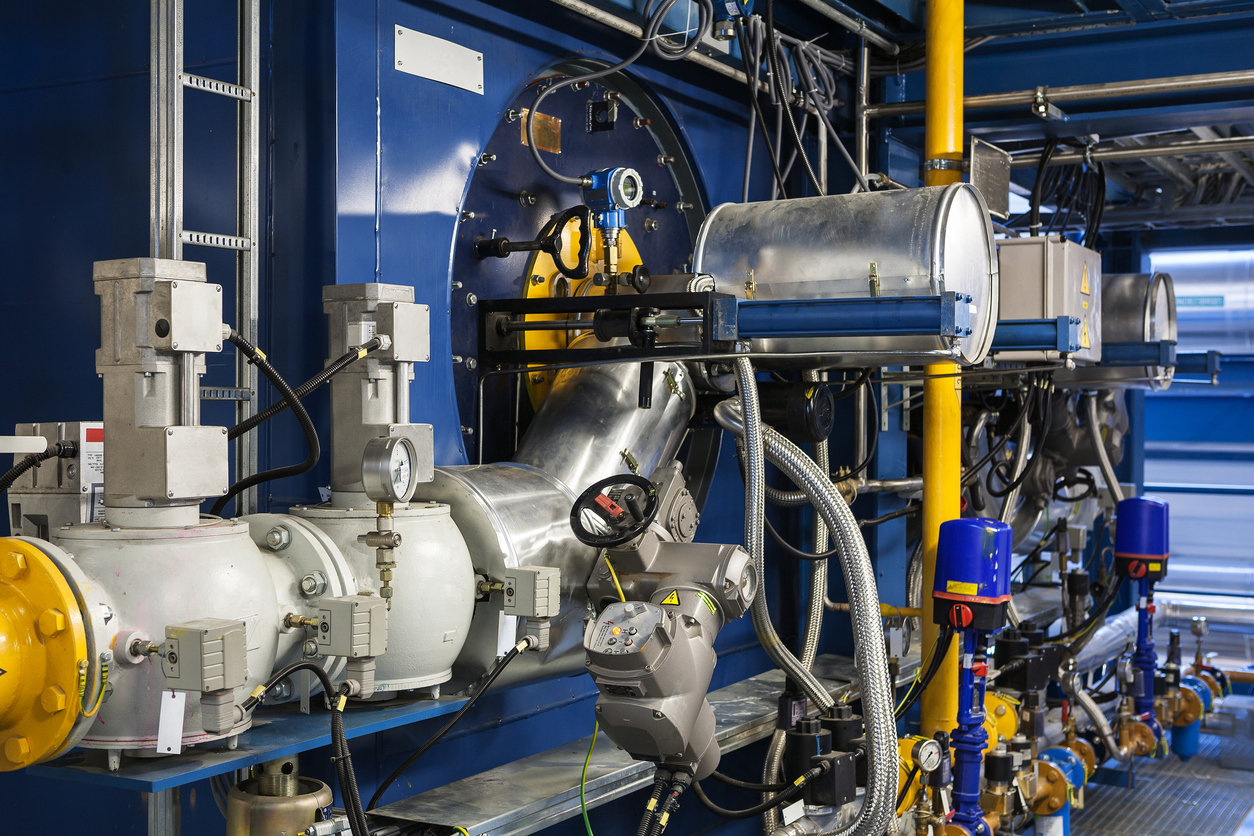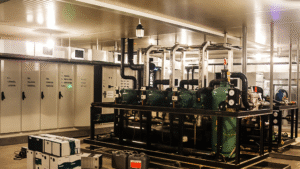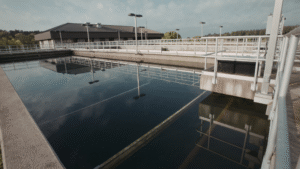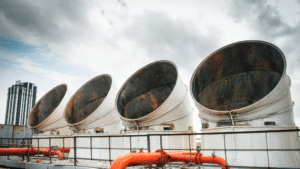Boiler water treatment chemical selection is essential for maintaining efficiency, safety, and equipment longevity. At ETI, we specialize in providing high-performance chemical solutions that support water treatment professionals in optimizing chemical programs for boilers. This guide covers key aspects of proper boiler chemical treatment—including pH control, oxygen scavenging, and scale prevention—while emphasizing the importance of selecting the right chemical formulations for maximum system performance and cost efficiency.
The Role of Water Treatment Chemical Treatment in U.S. Industrial Boilers
Industries across the U.S., from power generation and food processing to pharmaceuticals and manufacturing, rely on high-efficiency boiler systems. In states like Texas, California, Florida, Pennsylvania, and Ohio, effective chemical treatment is essential for:
- Preventing equipment failures and extending system lifespan
- Reducing fuel and operational costs
- Ensuring regulatory compliance and safety
Choosing the wrong chemical formulations or water treatment partners can lead to excessive downtime, increased fuel consumption, and safety risks for facility staff. That’s why ETI partners with water treatment professionals, ensuring they have access to the best chemical solutions for boiler performance optimization.
pH Control and Alkalinity Management
Maintaining the proper pH range according to industry standards and boiler manufacturer specifications (typically 9.5-11.5) is crucial for preventing metal degradation and scale formation. If the pH level falls too low, acidic conditions accelerate metal corrosion, leading to leaks and component failures. Conversely, excessively high pH levels can cause scale buildup and caustic embrittlement, weakening metal surfaces and increasing the risk of rupture.
To maintain a stable and protective pH environment, alkalinity builders are typically introduced into the system by a certified water treatment provider after a site walk and audit.
Types of Alkalinity Builders
Different alkalinity builders serve specific roles in achieving a stable chemical balance within the system.
- Sodium Hydroxide (NaOH): One of the most commonly used alkalinity builders, sodium hydroxide raises pH rapidly and does not produce carbon dioxide, reducing the risk of carbonic acid corrosion in the condensate system. However, it must be carefully dosed to prevent caustic embrittlement, particularly in high-pressure boilers.
- Sodium Carbonate (Na₂CO₃): Also known as soda ash, sodium carbonate provides a more gradual pH increase compared to sodium hydroxide. It is widely used in medium-pressure boilers but must be monitored in high-pressure systems, as it decomposes into sodium hydroxide and carbon dioxide at elevated temperatures, potentially leading to condensate corrosion.
- Phosphate-Based Alkalinity Control: Trisodium phosphate (Na₃PO₄) is widely used in medium- and high-pressure boilers due to its ability to regulate alkalinity while preventing scale formation. It decomposes into sodium hydroxide and disodium phosphate, providing both pH control and scale inhibition. Excessive phosphate levels, however, can contribute to sludge formation, necessitating careful dosage management.
- Sodium Bicarbonate (NaHCO₃): Used primarily in lower-pressure boilers where a mild alkalinity adjustment is needed. While it is less aggressive than sodium hydroxide, its use is limited in high-pressure systems due to its tendency to decompose into carbon dioxide, which can contribute to condensate corrosion.
Oxygen Scavenging: Preventing Corrosion Damage
Dissolved oxygen accelerates corrosion, leading to pitting, inefficiency, and system failure. Oxygen scavengers remove dissolved oxygen to protect metal surfaces and ensure long-term boiler reliability.
Common Chemical Oxygen Scavengers:
- Sodium Sulfite (Na₂SO₃): Reacts with dissolved oxygen to form sodium sulfate. Effective in low- to moderate-pressure boilers below 600 psi, it typically requires 7.88 ppm of sodium sulfite per 1 ppm of oxygen removed. Excessive use above recommended levels can increase total dissolved solids (TDS), necessitating frequent blowdown.
- Hydrazine (N₂H₄): Historically used in high-pressure applications due to its ability to decompose into nitrogen and ammonia, it aids in pH control while also eliminating oxygen. It reacts at 1.03 ppm per 1 ppm of oxygen removed, with an optimal residual of 0.02 to 0.1 ppm. Hydrazine is highly toxic and carcinogenic, leading to its phase-out in recent decades in favor of safer alternatives.
- Carbohydrazide (N₂H₃)₂CO: A safer alternative to hydrazine with comparable performance. Carbohyrazide is effective across a wide temperature range, including high-pressure applications up to 2500 psi. Recommended dosage is 1.5–2.0 ppm per 1 ppm of oxygen removed. It does not introduce dissolved solids, helping to maintain boiler cleanliness.
- Diethylhydroxylamine (DEHA): DEHA functions as both an oxygen scavenger and metal passivator, forming a protective magnetite layer on metal surfaces. Useful for comprehensive system protection, including feedwater, boiler, and condensate return lines. Reaction ratio is 1.3 ppm per 1 ppm of oxygen removed, with a residual target of 0.1–0.5 ppm.
- Tannins: Organic polymers with oxygen-scavenging and metal passivation properties. Effective at a dosage of 6 ppm per 1 ppm of oxygen removed. Typical feedwater dosages range from 10 to 30 ppm. Tannins are beneficial in low- and medium-pressure systems where organic treatments are preferred.
- Erythorbic Acid (Sur-Gard): A non-volatile scavenger that does not contribute measurable solids, making it ideal for systems that require strict steam purity. Requires 1.2 ppm per 1 ppm of oxygen removed, with a standard dosage of 5–15 ppm.
ETI formulates custom oxygen scavenger blends to help water treatment professionals select the most effective solution for each boiler system.
Filming Amines’ Corrosion Protection
Filming amines create a hydrophobic molecular barrier on metal surfaces, preventing direct contact with corrosive elements like dissolved oxygen and carbonic acid. Unlike neutralizing amines, which only adjust pH, filming amines coat system surfaces, offering long-lasting protection throughout the entire steam-condensate network.
Scale Prevention for Heat Transfer Efficiency
Scale deposits reduce efficiency by insulating heat transfer surfaces, forcing boilers to consume more energy. This leads to higher operational costs and potential overheating risks.
Key Scale Control Methods:
- Phosphate Treatments (e.g., Trisodium Phosphate) – React with calcium to form soft, removable sludge.
- Polymer Dispersants – Prevent mineral buildup by interfering with crystal growth.
- Chelants (e.g., EDTA, NTA) – Bind hardness ions to keep them soluble and prevent deposition.
Sludge Control and Dispersants
In addition to scale control, managing sludge buildup is essential for maintaining system cleanliness. Sludge consists of precipitated, suspended solids, and other impurities that accumulate in the very low levels-of-flow areas of the boiler, potentially leading to blockages, inefficiencies, and increased maintenance costs.
Polyacrylates are commonly used dispersants that help keep sludge particles suspended, making them easier to remove through blowdown. Starch-based dispersants provide an environmentally friendly alternative, offering effective sludge conditioning while reducing chemical waste.
When dispersants are properly dosed, sludge remains in a manageable state, preventing it from settling and causing operational issues. This also improves system efficiency and a reduction in maintenance-related downtime.
External vs. Internal Treatment Methods
Boiler water treatment is typically divided into key components: external treatment and internal treatment, both essential for maintaining system efficiency, preventing scale and corrosion, and ensuring long-term operational reliability.
Boiler water treatment consists of external (pre-treatment) and internal (chemical treatment) strategies, both of which are crucial for maintaining efficiency and reliability of conditioning process.
External (Pre-Treatment) Methods:
- Reverse Osmosis (RO) – Removes 99% of dissolved solids.
- Ion Exchange & Softening – Eliminates hardness ions to prevent scale.
- Demineralization & CEDI – Used in high-purity steam applications.
Internal Chemical Treatment:
This is where ETI’s expertise in chemical blending supports the water quality and treatment professionals. Our custom-formulated solutions include:
- Scale inhibitors
- Oxygen scavengers
- Dispersants
- Alkalinity builders
By focusing on chemical treatment, ETI supports water treatment companies in delivering effective chemical programs to their clients in order to reduce corrosion, extend equipment lifespan, and improve operational efficiency. These advanced chemical formulations ensure proper boiler water treatment so that boilers function at peak performance while minimizing energy costs and downtime.
Partnering with ETI for Boiler Water Treatment Chemical Solutions
Boiler water treatment chemical professionals and companies need reliable, high-performance chemicals to optimize their boiler treatment programs. ETI specializes in partnering with these water treaters to formulate custom chemical blends that enhance system efficiency, extend equipment life, and reduce operational costs. We collaborate closely with water treatment companies, providing them with superior-quality chemicals and technical formulation support to strengthen their treatment programs.
Contact ETI today to explore how our high-performance chemical solutions can support your business!
Frequently Asked Questions
Why is pH control important in boiler water systems?
pH control is crucial in boiler water systems as it prevents acidic corrosion and scale formation, thereby enhancing the efficiency and extending the lifespan of the boiler feed water system itself.
What are common oxygen scavenging chemicals used in boiler systems?
Common oxygen scavenging chemicals used to remove oxygen in boiler systems are hydrazine and sodium sulfite, the two methods which effectively reduce dissolved oxygen levels and mitigate corrosion.
How do anti-scaling agents work in boiler systems?
Anti-scaling agents function effectively in boiler systems by softening water and minimizing the accumulation of scale-forming minerals such as sodium phosphate magnesium and calcium. This process significantly helps in less thermal stress and thermal resistance while maintaining optimal steam boiler performance and efficiency at higher temperatures.
What is the difference between external and internal boiler water treatment?
The difference between external and internal boiler water treatment lies in their applications; external makeup water pre-treatment addresses water impurities before entering the boiler, while internal boiler water treatment chemicals focuses on managing boiler conditions by reducing hardness, sludge, and scavenging oxygen within the steam system itself.
What are the best practices for maintaining a boiler system?
To maintain a boiler system effectively, conduct regular inspections for leaks, schedule professional annual inspections, and monitor water temperature and boiler pressure consistently. Implementing these practices ensures safe and efficient operation of boiler feedwater system.





